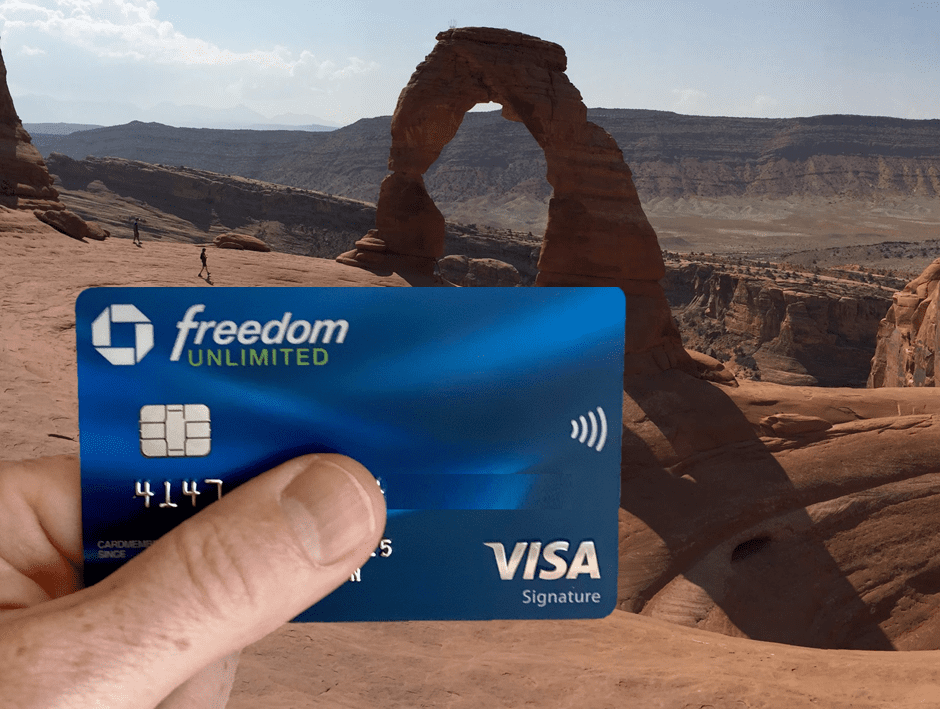In his post about the coming revamp of the consumer version of the Chase Sapphire Reserve card, Greg made a passing mention of the card’s big spend perks, listing his opinion under “cons” and calling the perks after $75K spend “lackluster”. Although I agree with his overall assessment of the card being a bad deal for many, I actually found the big spend perks more intriguing than Greg did. In fact, I’m considering going after them. Am I crazy?

Big spend perks don’t beat out new card bonuses
Before I dig into this in any depth, I want to first recognize the elephant in the room: while numerous credit cards offer perks for hitting specific big spend thresholds (Tim republished our Best Big Spend Bonuses post just the other day, so check that post for numerous examples), it rarely ever makes sense to consider reaching for a big spend threshold if you would otherwise consider putting the same spend toward new card welcome offers.
Our Best Offers page features a couple hundred credit cards on it. Most of those cards have minimum spending requirements of a couple/few thousand dollars in order to earn hundreds of dollars worth of points. The highest return for your spend will almost always be spending toward a new credit card welcome offer. Because of that, big spend bonuses just don’t make sense for most people.
However, there are different approaches to credit card rewards. Some folks will open 5 or 6 or 12 or more credit cards every year, constantly using spend toward a new card welcome offer. Other folks only want to have 2 or 3 cards within a single ecosystem for all spend. Other folks yet might prefer some sort of hybrid approach and may have plenty of spend to go around and then some.
So whether we are talking about spending toward airline or hotel elite status or the perks on the Sapphire Reserve card, keep in mind that big spend bonuses only make sense if you have spend that won’t be going toward a new card welcome bonus, whether because you have plenty of spending opportunities or because you are already opening as many cards per year as you’d like.
The Chase Sapphire Reserve card’s big spend perks at $75K
The coming revamp of the Chase Sapphire Reserve card includes a few perks for big spenders. Once you spend $75,000 within a calendar year, the following benefits are available for the rest of that calendar year and all of the next:
- IHG One Rewards Diamond Elite Status
- $500 Southwest Airlines Chase Travel credit (credits automatically applied when booking Southwest flights through Chase Travel)
- Southwest Airlines A-List Status
- $250 Credit for The Shops at Chase
Are the big spend perks worth chasing?

Greg listed the card’s big spend benefits under “cons” and called them lackluster. I don’t necessarily agree with his sentiments. As someone who flies Southwest a lot, I would have no difficulty using the $500 Southwest Airlines Chase Travel Credit (though, admittedly, needing to use that credit through Chase rather than directly through Southwest does make it less appealing than a straight Southwest credit). Most Southwest A-list status benefits can be replicated with a Southwest credit card, but for those without the card, A-list status could easily be worth $100 on a single trip given checked baggage and seating benefits for one’s party.
Greg previously found that spending $40K on an IHG card to earn IHG Diamond status (and some other stuff along the way) would be worthwhile (See: Are the IHG Premier cards worth our big spend?). In that post, he offered a conservative valuation of IHG Diamond status of just over $200 (while noting that some people will find it worth far more and some perhaps less, so see his post for more information on that valuation).
Let me try to place a monetary value on each of the Sapphire Reserve’s big spend benefits:
- IHG Diamond status: $200 (see this post for more)
- Southwest A-list status: $100 (low valuation here because a Southwest credit card offers nearly-as-good benefits, but this could certainly be worth more to you)
- Southwest Travel Credit: $400. You can sometimes buy a $500 Southwest gift card for $430 at a warehouse club (see this now-expired example) and I think we need to discount this further since it is a credit that must be used through Chase Travel.
- Shopping credit at The Shops: $100. It is hard to know how much to value this since I imagine The Shops will not have the best prices and will be absent common stacking opportunities. Still, with a $250 shopping credit, I could probably find some gifts that I’d have otherwise spent at least $100 to buy (and maybe it will end up being a bit better yet).
That’s a total of $800 in value across the big spend perks, which represents an incremental return of 1.07% return on the $75,000 spend required to trigger those perks.
If one values Chase Ultimate Rewards points at our Reasonable Redemption Value of 1.5c per point, the combined return between points earned on spend (assuming the $75K is done at 1x) and the big spend perks is 2.57%. That’s actually not bad! In fact, it falls right in the same range as Greg’s estimates for return on spend when he said that spending on an IHG card toward Diamond status could be worthwhile.
Of course the biggest difference here is that counting these benefits as an incremental ~1% return on spend requires your valuation of the perks to match mine. You may value the big spend perks more or less than I do, which will obviously influence your decision to spend. Further, counting them as an incremental ~1% return means needing to be sure that you cross the $75K spend threshold in a calendar year (and if you were to exceed $75K by a lot, you would be reducing your net return on spend).
Chase Freedom Unlimited as an “everywhere else” card

Unlike Amex, Citi, and Capital One, Chase does not offer a card that offers a base earning rate of 2 transferable points per dollar spent. Instead, the Chase Freedom Unlimited card, which offers 1.5 Ultimate Rewards points per dollar spent on most purchases, is the default “everywhere else” card for Chase Ultimate Rewards fans. On the business side, the Chase Ink Business Unlimited offers the same 1.5 Ultimate Rewards points per dollar spent on otherwise unbonused purchases.
While many might reasonably prefer earning 2 transferable points per dollar spent via cards like the Amex Blue Business Plus (which offers 2x on the first $50K spent per year, then 1x) or the Citi Double Cash card, there are still many folks who simply prefer Chase Ultimate Rewards and make a card like the Freedom Unlimited their default card for unbonused spend.
While I do use several 2x-everywhere cards in my household, I’ve actually been using my Freedom Unlimited card more in 2025 than in other recent years. That is in part because of increased spending overall this year and in part because my pool of Ultimate Rewards points has gotten very low. I’ve definitely been working to replenish my Ultimate Rewards points as best I can.
Given that I have been spending more on the Freedom Unlimited card this year, I had to ask myself this: if I were going to spend $75K on the Freedom Unlimited card, would I be better off putting the same spend instead on the new Sapphire Reserve card? I found that worth contemplating not just because of my own curiosity but because I imagine that there are some readers out there who probably do put a good deal of spend on a Freedom Unlimited card, perhaps in the form of tuition, tax payments, and more.
Comparing big Sapphire Reserve spend to big Freedom Unlimited spend
When I pointed out my initial math on the Sapphire Reserve’s big spend bonuses, I think Greg yawned. He wouldn’t value the Southwest credit or status as high as I did and even if he did, he didn’t find an additional 1% return to be a compelling case for spending $75K on the Sapphire Reserve.
However, I still couldn’t quite get the notion out of my head. As noted above, I’ve been spending more heavily on my Freedom Unlimited card this year, which made me wonder this: If I were going to spend $75K on a Freedom Unlimited card, would I be better off upgrading that card to a Sapphire Reserve and spending $75K on the Sapphire Reserve card instead?
Consider the possible returns:
Chase Freedom Unlimited card:
- $75K spent at 1.5 points per dollar = 112,500 points
Chase Sapphire Reserve card:
- $75K spent at 1 point per dollar = 75,000 points + big spend perks
It boils down to a simple trade: Either I earn an additional 37,500 points with the Freedom Unlimited or I earn the big spend perks of the Sapphire Reserve.
If we value the 37,500 additional points I’d earn with the Freedom Unlimited at our Reasonable Redemption Value of 1.5c per point, that’s $562.50 in value. Would it make sense to trade away $562.50 in value in exchange for IHG Diamond, Southwest A-list, a $500 Chase Travel credit for Southwest, and a $250 credit toward The Shops?
I imagine that even some who disagreed with my valuations above might find more than $562.50 in value out of the big spend perks. IHG Diamond status alone could be worth quite a bit for someone who would make a couple of stays at expensive / secluded IHG properties where the savings on breakfast might make a measurable difference.
Of course a major difference here is that if you put your spend on the Freedom Unlimited card, you could keep the points you earn on spend for years, waiting to cherry-pick the perfect redemption. On the other hand, the big spend bonus perks are only valid for the rest of the calendar year in which they are earned and the following calendar year. The perks are a use-it-or-lose-it value proposition, whereas the points can easily be kept alive and/or transferred to the right partner in the right moment for outsized value.
Nonetheless, I don’t think I would have difficulty getting value out of most of the big spend perks. Since my wife has a Southwest Rapid Rewards Priority card, the A-list status might be less meaningful to me, although I do think that the priority check-in / bag drop counter is worth something to me (as would be getting benefits even when not traveling with my wife). I could easily exceed the conservative valuation for IHG Diamond. I’m certainly intrigued.
Obviously, if I were to consider upgrading to a Sapphire Reserve, there would also be the annual fee to consider. If I upgrade now, I believe that I’d end up paying a reduced annual fee for my first year of the Sapphire Reserve card (the new $795 fee will be charged upon first renewal after October 26, 2025 for those who are existing cardholders as of June 23, 2025). The card’s coupon credits would easily justify the reduced fee (and I could imagine that we may even keep a Sapphire Reserve in our household). To me, that conversation is a separate consideration that has to pencil out separately from the big spend perks. I’d only consider upgrading if I thought that the card was worth it without considering the $75K spend perks.
But I am considering an upgrade, and if I do it, I do find the big spend perks somewhat intriguing here.
What do you think?
Am I off my rocker to consider spending $75K for the Sapphire Reserve card’s big spend perks instead of spending $75K on a Freedom Unlimited card? I have no doubt that many readers would find this prospect crazy as compared to opening new card cards and using that spend to earn other welcome bonuses and I don’t disagree with you there. But instead, for someone who was committed to spending $75K on a Freedom Unlimited card, would it be crazy to consider spending $75K on the Sapphire Reserve instead?
To be clear, I’m not sure that I’m going to do this. There’s no doubt that $75K is a ton of spend. And I might very well change my mind and decide that I have other “wants” with that spend. At the same time, given numerous recent spending opportunities, I might have plenty of spend to go around to consider this — and that really has me considering an upgrade to the Sapphire Reserve, effectively trading the opportunity for 37,500 points in exchange for the big spend benefits.





I kept CSR at @ 550 a year after long debate, but not anymore. New benefits don’t appeal to me. 1.5 multiplier is gone and 3 points for ALL travel is gone. These two reasons kept me as a member. Thank you.
I probably get about $10k/year in value from IHG diamond accounting for all of the room/suite upgrades and free breakfasts.
Year one I attained Diamond through credit card spending just to get the perks lined up before traveling. Now I earn it through 70 nights of stay.
Remember late last year when IHG let anyone essentially buy Diamond Status for only $40-200 more than the cost to buy points at half a cent? It’s opportunities like these that make this idea an easy “no way” for me.
> But instead, for someone who was committed to spending $75K on a Freedom Unlimited card, would it be crazy to consider spending $75K on the Sapphire Reserve instead?
Who is this crazy person committed to 75k on the CFU?
To put it another way, instead of doing something absolutely crazy (75k on CFU), something slightly less stupid looks like a good idea (75k on CSR)! But both are still crazy ideas.
I really hate this trend of $75K thresholds. But at least Chase is granting new perks, and not just giving back perks they took away (looking at you AMEX and Capital One).
Nick you are 1000% bonkers if you think this is a good idea. Putting aside BoA 2.625%, Robinhood 3%, there are numerous big spend bonuses on most of the hotel cards that offer more value for spend (Hilton, Hyatt, Marriott, etc.). And the no-fee Citi DoubleCash earns 2x citi points. Even if you assume Citi points are worth only 1.3cpp for some reason, that’s still effectively 2.6% back for any amount of leftover spend.
You gotta do you but I think that 2X points through another card is worth more.
Nick I like your thought provoking pieces, but I think you are off your rocker here unless you’ve already maxed out all other big spend opportunities on cards you and your wife have.
$75K can get you five Hilton FNCs depending on what cards you have. That blows the $800 in value from spending on the CSR out of the water. Even if you just put $60K on a a single Hilton Aspire without any upgrade/downgrade shenanigans two Hilton FNCs are still worth more than $800!
If IHG Diamond is really what drives the interest remember that you can earn that with only $40K spend on the IHG Premier or Premier Business card. You’ll get Diamond status plus a 10,000 point bonus and $100 statement credit along the way, which would be worth around $350 based on your valuations (plus the base spending on the IHG card). And you still have enough spend left over to go get two more Hilton FNCs, or one plus earn the Aviator Silver double companion voucher again (and possibly keep AA status). Or earn more Hyatt nights and milestone rewards. Or maybe put all this spend on a Bilt card and earn Gold or Platinum status with Bilt.
I just don’t see it unless you’ve maxed out everything else already, or are insistent this spend must be earning UR points. A Southwest credit and a marginally useful A-list status? Meh.
As as an IHG Diamond who lives in Europe and travels to SE Asia once a year, I can confirm suite upgrades are the norm and can’t remember when I failed to get one. I’m also an IC Ambassador so that may have an additional effect. We even got upgraded to the Presidential Suite at an IC in Bangkok last Christmas since they had no other upgrades available. Also stayed at IC Danang and Regent Phu Quoc with suite upgrades. Suite upgrades galore in Europe as well. These were all on points stays as well. I say go for it since IC Diamond is a hidden status “gem”. You see what I did there?
Nick, why are you assuming that all $75k of your CSR spend would be at 1x?
Most using the CSR will concentrate categories like dining, hotel (especially unaffiliated), and airfare on this card. If a significant subset of your spend is in these categories, your blended reward rate will be notably higher than 1x.
FWIW, If I were a bit SWA user like yourself, I’d surely prioritize $75k spend on CSR over the same spend on FU.
Was also wondering this. I assuming it’s for the sake of simplicity, factoring in the fact that Nick probably books most (otherwise expensive) flights and hotels with points, and may get better than 3x on dining with another card (Amex Gold, Citi Custom Cash). So it may only be $70k at 1x, which isn’t a huge difference.
Having read a ton of content from Nick, I know that he doesn’t spend a lot of cash on hotel and airfare (probably an order of magnitude less than $75k each year). He does spend on restaurants, but that would also not nearly come to $75k. If he is hitting the $75K in a year, much of that will be in unbonused categories, and for the sake of this valuation, he wants to estimate the value somewhat conservatively, which I appreciate.
anytime you are doing a valuation calculation of benefits that have a somewhat arbitrary personal value or have a value that can swing a lot in either direction, best practice is to always assume worst case, most conservative scenario. You always want to know what the floor is for value you are getting.
For big spenders: it would seem likely you could come up with $100,000+ to fund an investment account at BofA/Merrill (in or out of an IRA). There you can get 2.625% cash back on any spend – nearly $2,000 on that same $75K you are talking about here.
For larger expenses I use a mix of that B of A card (think paying taxes for a profit), Chase Freedom Unlimited, Amex Blue for Business, Cap 1 Venture X and for most general spending like supermarkets, Amazon, etc. I use VISA/MC debit cards bought with a Chase Ink card for 5x return.
That is after as many sign-up bonuses I can get. The only exception is the Hyatt Business card where I spend $50K each year to get the point rebates on stays and to help keep Globalist status.
To me, all these bits and pieces (perks) are just trying to make me do or buy something I almost never want – like the Amex offers which I don’t even bother looking at anymore.
BofA /Merrill is pretty unfair because it makes almost everything else look bad. Nick can argue that 75k on CSR can beat 75k on CFU but that needs the caveat that you have to assume someone who would pick the CFU in the first place.
I also spend large amounts on tax payments, and my _marginal_ value per point is it’s cashback value of 1cpp – I can generate more points than I can use for redemptions through SUBs (also via tax payments) that I have no other use for additional points other than to cash out.
BofA is real lost cash back if you use anything else
For those who read this blog a month ago and signed up for the USBank simplify card that gives 4% cash back, a 75k spend over a yr is 3000$ cash back.
So, NO- this sapphire is not worth that spend.
For most people SUB is the best way to go with free choices among banks.
For those who have spend left over after SUB then use the US Bank card.
Pretty much ALL our cards are sock drawered now except when we do a SUB
I appreciate the consistent referencing the RRV of UR, but I suspect it’s not actually helpful in this case. Greg has said he won’t redeem Hyatt points (or UR, I forget which) for less than 2cpp, and if you are prioritizing the CFU over the BBP, you’re clearly closer to that valuation than the RRV.
A thought experiment I’m always wondering about: what if you had a new card, the…Hyatt Freedom Unlimited, which earned 1.5 Hyatt points per dollar. Would that change the calculus at all? I get that the RRV for Chase points is useful for people without a huge supply or extensive travel habits, but surely it’s now either too high (given that CSR redemptions at that value are nearly dead) or too low.
$75k spend is creating a superclass of Sapphire Reserve (Elite). Chase didn’t do a very good job of designing perks that would align to the interests of the highest spenders. Better would have been Hilton Diamond or Marriott Platinum (and maybe even first year get the perk for 3mo if you spend $37.5k in 90 days); since Delta is married to Amex, United Priemer Platinum status and/or even just lounge access.
Who is the idiot who designed the new perks? I’m waiting to see what Amex does and may go back to them…
Hilton diamond is pretty worthless.
speak for yourself. I’ve gotten some pretty excellent upgrades on my last few Hilton stays as a result of my Diamond status.
I am surprised they didn’t implement these big spend bonuses as milestones, which seem to be rather popular with many programs these days. Spend
$30k : $100 The Shoppes’ credit
$40k: WN A List Status
$50k: IHG Diamond status
$60k: WN travel credit
$75k: Family size pack of Biscoffs
Great point. That family pack of Biscoffs would be hearty motivation to grind out the final $15K.
Throw in a brisket sandwich at Buc-ee’s and I’m down.
Such a bad $75k perk design! Those who are most likely to spend over $75k are not the same people who spend (or want to spend) on Southwest Airlines!
This is an excellent point. A general travel credit would be more appropriate. That being said, Southwest is in a financial jam and is probably an easy “target” for Chase to squeeze. I don’t think Chase could have obtained the same out of United.
The $75k spending number seems to be a common target. (e.g. Amex Platinum and Amex Delta Reserve regarding unlimited lounge access or guest privileges.) They probably have consumer research pointing to that number.
Perhaps, as TravelGeek (above) suggests and along the line of what Bilt has done, Chase could incentivize continued spending by establishing milestone benefits.
Citi’s rumored Strata Elite was supposed to have an elevated multiplier for “all other” spending. Surveyed customers wanted an all-in-one card. So, perhaps a Chase milestone benefit might be at (say) $150k of spending for 1.5X on “all other” spending for the remainder of the current calendar year and the following calendar year. Sort of like tier status renewal.
Nothing screams premium like southwest
Obviously, Nick would be an exception, but I’ve got to agree with you in general.